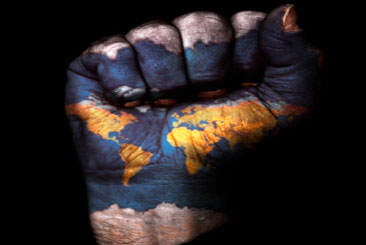|
|
| Taking the Politics Out of Climate Change… and what correctional administrators need to know |
| By Robert Kravitz, President AlturaSolutions |
| Published: 01/08/2018 |
 There is probably no other country in the world in which climate change, also known as global warming, is as much a political issue as it is in the U.S. It's not the issue itself that causes conflict as much as what is causing climate change.
There is probably no other country in the world in which climate change, also known as global warming, is as much a political issue as it is in the U.S. It's not the issue itself that causes conflict as much as what is causing climate change.
In most of the world, it is believed climate change is the result of human-made greenhouse gasses and other toxins building up in the atmosphere, destroying the protective layer covering the earth. As it does, the earth is getting warmer, which it is. This “cause” is vehemently questioned by some in this country. They do not believe in the human-made component. So, let’s not even go there. Our goal here is to take the politics out of climate change and just try and stick to facts that are universally accepted as much as possible. And to help us accomplish this, we are going to turn to Klaus Reichardt, the CEO of a company that makes – hold your hats – urinals, no water urinals to be more precise. Why a urinal manufacturer? Because changes in our climate are impacting water supplies around the world. Each traditional urinal uses about 30,000 gallons of water per year just to flush urine down the drain. Multiply that times the number of urinals just in this country and we are talking about billions of gallons of water used annually. Correctional administrators must make sure the 2.3 million people currently incarcerated in this country in 1,700 state prisons; nearly 1,000 federal prisons; and more than 3,000 local jails always have the water they need, when they need it. And one of the ways they will be able to accomplish this, explains Reichardt, is by reducing the amount of water used every day in their facilities. This long-term reduction is referred to as “water efficiency,” and one way to be more water efficient is to install water using fixtures in bathrooms and kitchens that use less or no water whatsoever. So, let’s begin. Referring to the bone-chilling weather here in Chicago (where this is being written), and in much of the northern part of the U.S. at the end of 2017, Donald Trump tweeted: “hey, it's cold outside, global warming must be fake.” I must admit, last winter it was so warm in Chicago that many people, including myself, assumed that a climate change trend is behind it. What’s really going on? According to Reichardt, to explain what’s happening, “we need to know the difference between weather and climate. Weather is temporary and can change from season to season. Climate change [on the other hand] is a long-term trend, the direction the climate is taking over the long term [and] that trend indicates the climate is getting warmer.” When did this all start? To answer this, Reichardt points us to a study prepared by the National Oceanic and Atmospheric Administration (NOAA). Before 1980, there were years when the earth was getting colder, “but everything changed after 1980. Since then, the earth has been getting warmer every year.” Is climate change impacting the U.S? Many people believe the severity of the 2017 hurricanes in Houston, Florida, and Puerto Rico was the result of climate change, according to Reichardt. “Hurricanes are powered by warming seas. In the Atlantic Ocean, there have been 33 category five hurricanes (the strongest) since 1924, but eleven of these have occurred in the past 14 years. If this continues, we have no other explanation than to assume climate change is behind it.” How does climate change impact the earth’s water? “One of the most notable ways, and one that is often overlooked, is that as the earth’s temperature increases, it raises the evaporation of water about four percent for every degree increase.” In the past 33 years, the earth has warmed a growing fraction of a degree each year. Other ways he says the earth’s water is being impacted are the following:
Reichardt says it has already impacted correctional facilities in many areas of the U.S. by just increasing the cost of water “With already tightened budgets, this increased cost [of water] must be factored in, which often means other correctional operations must be curtailed or cut entirely.” As to correctional facilities, he also has four central concerns:
“When it comes to water, yes. It is amazing how many technologies have been developed in recent years that help reduce water consumption,” says Reichardt. “This includes waterless urinals, kitchen pre-rinse spray nozzles, dual flush toilets, and water brooms. “These developments make me hopeful that technology will also help us address the many other impacts of climate change now and into the future.” Robert Kravitz is a regular contributor to Corrections.com and is a frequent writer for the professional cleaning industry. |
MARKETPLACE search vendors | advanced search

IN CASE YOU MISSED IT
|


Comments:
No comments have been posted for this article.
Login to let us know what you think